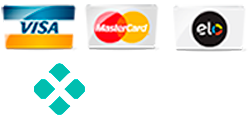Micro-targeted advertising for niche audiences has evolved beyond broad demographic segmentation, demanding granular, data-driven techniques that enable brands to reach highly specific groups with personalized messages. This article explores advanced, practical strategies to implement hyper-precise micro-targeting campaigns, ensuring your marketing efforts resonate deeply within niche communities and deliver measurable ROI.
1. Deepening Audience Segmentation for Niche Markets
a) Identifying Micro-Interest Groups Through Data Analysis
Begin by aggregating diverse data sources—website analytics, social media interactions, purchase histories, and customer feedback—to identify micro-interest clusters. Use clustering algorithms like K-Means or DBSCAN on behavioral and interaction data to discover natural groupings. For example, if you sell outdoor gear, analyze browsing patterns and user-generated content to identify subgroups such as ultralight backpackers or urban cyclists interested in eco-friendly commuting.
b) Using Psychographics and Behavioral Data to Refine Audience Profiles
Enhance segmentation by integrating psychographic data—values, lifestyles, motivations—and behavioral cues like purchase frequency, device usage, and engagement times. Tools such as Claritas or Experian can provide psychographic overlays. For instance, targeting eco-conscious ultralight backpackers who prefer sustainable materials and frequent online research about environmental impact.
c) Case Study: Segmenting a Hobbyist Community for Targeted Ads
A niche outdoor clothing brand analyzed social media groups, forum activity, and purchase data to identify subgroups like winter mountaineers and trail runners. They created distinct profiles incorporating activity frequency, gear preferences, and content engagement, enabling tailored ad campaigns that increased conversion rates by 35% within these micro-segments.
2. Data Collection Techniques for Precise Micro-Targeting
a) Leveraging First-Party Data: Website, App, and CRM Sources
Implement comprehensive tracking through tools like Google Tag Manager, Facebook Pixel, and custom event tracking. For example, set up event listeners to monitor specific interactions such as product views, add-to-cart actions, or content downloads related to niche interests. Use this data to build detailed customer personas and segment audiences based on on-site behavior.
b) Integrating Third-Party Data for Enriched Audience Insights
Partner with data providers like Oracle Data Cloud or Acxiom to augment your first-party datasets. Employ lookalike modeling to identify new prospects sharing characteristics with your high-value micro-segments. For instance, if your top customers engage via niche-specific forums, third-party data can help find similar users across broader digital ecosystems.
c) Ethical Data Collection and Privacy Compliance Best Practices
Always adhere to GDPR, CCPA, and other privacy laws. Use transparent consent mechanisms, enable easy opt-out options, and anonymize data when possible. Conduct regular audits to ensure compliance, especially when integrating third-party sources or deploying location-based targeting.
d) Step-by-Step Guide: Building a Micro-Interest Database Using Customer Interactions
- Aggregate all first-party data from your website, app, and CRM systems into a centralized database.
- Implement event tracking to capture niche-specific interactions, such as engagement with niche content or specific product categories.
- Segment users based on interaction patterns, purchase history, and psychographics.
- Enrich profiles with third-party demographic and psychographic data.
- Regularly update and validate your database to reflect new customer behaviors and preferences.
3. Crafting Hyper-Personalized Ad Content for Niche Audiences
a) Techniques for Dynamic Creative Optimization (DCO) Based on User Data
Utilize platforms like Google Studio or Facebook Dynamic Ads to serve creatives that adapt in real-time. For example, dynamically display gear recommendations based on a user’s browsing history—showing ultralight tents to backpackers or thermal layers to winter mountaineers. Implement rules that swap images, headlines, and calls-to-action depending on the user’s niche interests and stage in the buyer journey.
b) Developing Messaging That Resonates with Specific Micro-Interests
Create tailored copy emphasizing micro-interest values. For instance, for eco-conscious outdoor enthusiasts, highlight sustainability features and environmental impact. Use language, hashtags, and references that mirror their community conversations. Use tools like Copy.ai or Jasper to generate variations that align with each micro-segment’s tone and motivations.
c) Example Workflow: Creating Multiple Variations for A/B Testing
- Identify core micro-segments and define key message variants tailored to each.
- Design multiple creative assets per segment, varying headlines, images, and call-to-actions.
- Implement an A/B testing framework within your ad platform, ensuring equal distribution and tracking performance metrics.
- Analyze results to determine which combinations yield the highest engagement and conversions, then iterate with refined messaging.
d) Incorporating User-Generated Content and Niche Community Voices
Leverage authentic content from niche community members—reviews, photos, or forum posts—to build credibility. For example, feature real testimonials from ultralight backpackers about your gear, integrating user photos into ad creatives to enhance trust and relatability. This approach fosters community loyalty and amplifies message resonance.
4. Platform-Specific Tactics for Micro-Targeted Advertising
a) Facebook and Instagram: Using Custom Audiences and Lookalikes for Niche Segments
Create Custom Audiences based on your segmented micro-interest data—such as visitors who viewed specific products or engaged with niche content. Use the Lookalike Audience feature to find new users exhibiting similar behaviors, but set the similarity threshold low (e.g., 1%) to maintain niche specificity. Regularly refresh your audiences to prevent fatigue and ensure relevance.
b) Google Ads and YouTube: Keyword and Contextual Targeting for Small Audiences
Utilize long-tail keywords and niche-specific contextual targeting. For example, target search queries like “best ultralight backpack for women” or “eco-friendly camping gear review.” Use YouTube’s affinity and custom intent audiences to serve videos to viewers who have demonstrated niche interests, such as outdoor gear review channels focused on sustainable products.
c) Programmatic Advertising: Setting Up Audience Segmentation and Real-Time Bidding Strategies
Leverage DSPs (Demand Side Platforms) like The Trade Desk or MediaMath to set up detailed audience segments based on your micro-interest profiles. Implement data management platforms (DMPs) to create multi-dimensional audience segments—combining behavioral, contextual, and location data. Use real-time bidding (RTB) rules to prioritize bids for high-value niche audiences during peak engagement times.
d) Practical Setup: Step-by-Step Campaign Configuration for a Micro-Interest Audience
- Define your niche micro-segment with specific data points (e.g., outdoor enthusiasts interested in ultralight gear in the Pacific Northwest).
- Create audience segments within your ad platform using custom data uploads, lookalikes, or contextual signals.
- Design hyper-personalized creatives tailored to this segment’s interests and motivations.
- Set campaign parameters: geographic location, device types, time of day, and bidding strategies optimized for small audiences.
- Launch with a controlled budget, monitor real-time performance, and adjust bids and creatives based on initial data.
5. Leveraging Advanced Targeting Features and Tools
a) Utilizing AI-Powered Predictive Modeling to Identify High-Value Micro-Audiences
Implement machine learning models—using tools like Google Cloud AI or DataRobot—to analyze historical engagement and conversion data. Develop predictive scores for users based on their likelihood to convert within your niche. Use these scores to prioritize bids or serve specific creatives to the most promising prospects.
b) Employing Geofencing and Location-Based Targeting for Hyper-Local Campaigns
Set up geofences around specific outdoor trailheads, local clubs, or community centers frequented by your niche audience. Use tools like Google Maps API or specialized geofencing platforms (Simpli.fi, GroundTruth) to trigger ads when users enter these zones. Combine with time-of-day targeting to catch users during relevant activities, such as before weekend hikes.
c) Combining Multiple Data Sources for Multi-Dimensional Audience Profiles
Create composite profiles by integrating behavioral data, psychographics, location, and device data. Use data management platforms (e.g., Lotame, Permutive) to build unified audience segments that capture nuanced micro-interests, allowing for multi-channel, synchronized campaigns.
d) Common Pitfalls: Over-Targeting and Small Audience Exhaustion — How to Avoid Them
Overly narrow targeting can lead to rapid audience fatigue and high CPMs. To prevent this, set audience size thresholds, rotate creatives regularly, and expand targeting criteria gradually. Use frequency capping to limit ad impressions per user and monitor diminishing returns carefully.
6. Monitoring, Optimization, and Troubleshooting
a) Key Metrics for Measuring Niche Audience Engagement and Conversion
Focus on micro-conversion metrics such as click-through rates (CTR), engagement time, and content shares within niche communities. Track post-click behavior with event tracking to measure actions like webinar sign-ups or niche product purchases. Use attribution models that assign weight to touchpoints relevant to your micro-segments, such as social interactions or forum referrals.
b) Techniques for Adjusting Targeting Criteria Based on Performance Data
Implement A/B testing on creative variations and audience segments. Use platform analytics to identify underperforming segments and reallocate budget dynamically. For example, if engagement drops after initial exposure, consider broadening the audience slightly or refining messaging to better match user motivations.
c) Automating Optimization with Machine Learning Tools
Utilize platforms like Facebook’s Campaign Budget Optimization or Google’s Smart Bidding to automate bid adjustments based on predicted conversion likelihood. Set up rules within your ad management tools to pause low-performing creatives or audiences automatically, freeing your team to focus on strategic tweaks.
d) Case Example: Iterative Refinement of a Niche Campaign to Improve ROI
A small outdoor gear retailer targeted eco-conscious trail runners. Initial campaigns had a CTR of 1.2% and a CPA of $45. After segmenting further based on engagement time and integrating user feedback, they optimized creatives and expanded geographic targeting. Continuous monitoring and iterative adjustments reduced CPA by 30% over three months, illustrating the power of data-driven refinement.
7. Practical Campaign Workflow: From Strategy to Execution
a) Audience Research and Data Gathering
Start with comprehensive data collection, combining website analytics, social media insights, and third-party datasets. Map out niche behaviors, content preferences, and community interactions.
b) Audience Segmentation and Persona Development
Use clustering algorithms and psychographic overlays to create detailed personas. Document each micro-segment’s motivations, pain points, and preferred content channels.
c) Creative Development and Personalization
Design multiple creative templates tailored to each persona. Use DCO tools to automate content variation based on user data.
d) Campaign Launch and Real-Time Monitoring
Set up your campaigns with precise targeting parameters. Monitor key metrics daily, adjusting bids, creatives, and audiences dynamically.

